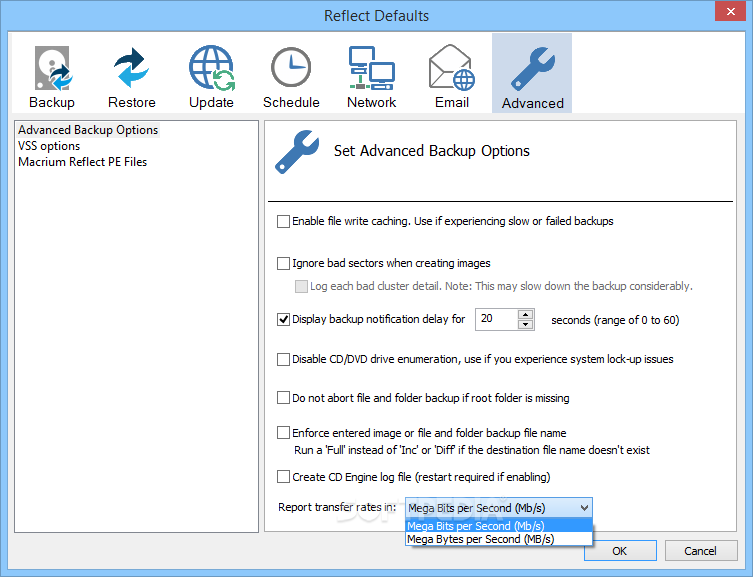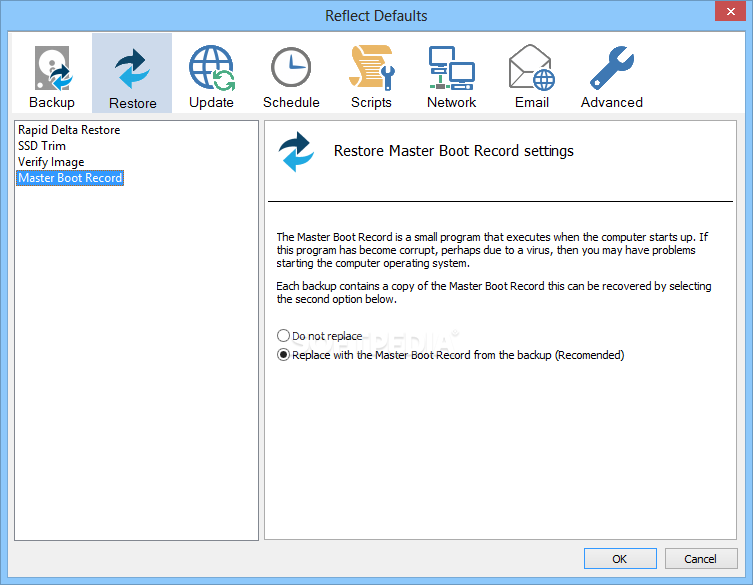
- Download macrium reflect rescue usb how to#
- Download macrium reflect rescue usb full version#
- Download macrium reflect rescue usb install#
- Download macrium reflect rescue usb drivers#
- Download macrium reflect rescue usb windows 10#
You will need it if the OS drive fails because then you can't boot into Windows but you can boot into Macrium with it then restore an Image you made previously. The Rescue media (CD or USB) runs the Macrium program and you can create or restore an Image with it. (Strictly speaking C is a partition on a drive, not a whole drive).

Try up to and including Step 3 here, make 100% sure you use the value of N for the Usb stick :. You could make a clone but that will use a whole new drive and will take longer because a clone copies everything including unused space on the source drive to the destination drive.
Download macrium reflect rescue usb install#
So you can often get several images onto 1 other drive, plus it's easy to make updated images after the drives contents have changed a lot, like if you install a new program. Images are smaller than the original files and tend to be quite fast to create or restore. An Image is similar to a zip file, it contains a compressed version of the files making up the drive/partition. You can make an Image of the whole drive or you can clone it to another drive. I also like to make Images this way, even if Windows still works. If your HDD or SSD Windows drive fails you boot the Usb stick containing Macrium and restore an Image you made previously. Yes, the rescue media works by booting into a version of Macrium running in Windows PE (that's the official name for what I called a cut-down version in my previous post). I can see that this will be pretty easy once I get the USB stick in the shape Macrium requires. So I ejected the USB stick, but then diskpart said there was no media there.

At first the USB stick was mounted and diskpart complained that it was already online. Please use Micosoft diskpart to initialize this disk as MBR." So I went there (following this: ) and ran into a roadblock. I stuck a USB stick in (using the defaults) and tried it (the Rescue Media Builder) and got "The USB disk does not contain a partition table, it may not be UEFI bootable. Wouldn't it be better to just have a cloned image of the whole "C" drive?
Download macrium reflect rescue usb full version#
And just the general reason for needing this rescue media is because if the computer crashes, I plug in the rescue media usb, and it will allow me to start the computer with a "bootable, lightweight version of Windows and a full version of Macrium Reflect" and this will allow me to somehow restore the computer to the way it was before the crash? I would make a Usb stick leaving everything at default settings, that's what I do, I boot from the Usb stick to make or restore an Image.Ĭlick to expand.Thanks Allan, I'm understanding it a little better.
+Keygen.jpg)
'Prompt for key press to continue boot sequence' asks you to press a key within a few seconds to boot into Macrium on a CD or Usb stick, otherwise it will skip to the next boot device, usually the Windows drive. The idea is you can boot into Macrium and it will 'see' the NVMe drive.
Download macrium reflect rescue usb drivers#
'Check for device drivers on boot' adds drivers to the Usb or Iso that could be needed for Macrium to work with that computer, such as a driver for an NVMe SSD if you have one. If you connect a Usb stick you can select it and make it into a Macrium rescue device. The 'Windows Boot Menu' adds a choice to boot straight into Macrium in the boot menu when you start the computer. 'WIM' stands for Windows Image Management, it just means an Image file made a certain way. The idea is to NOT boot into Windows, instead you boot into a cut-down version that only runs the Macrium program, nothing else. So let's assume I have either the Windows Boot Menu (is this stored off the computer?) or the ISO, do I then proceed with the clone? And if something goes wrong, the Windows Boot Menu or ISO will bring the original version of the OS and files and apps back?

So if I choose either and then "Build" it starts building a "WIM." What's a WIM? Where is it being downloaded? Onto a USB stick? Somewhere else? If I choose Windows Boot Menu, should I choose Add Boot Menu or not? If I choose ISO File, should I choose "Check for devices drivers on boot"? Should I check "Prompt for key press to continue boot sequence"? It says it's storing it in C:\MacriumRescue.iso, so does that file stay on the computer during the clone?
Download macrium reflect rescue usb windows 10#
What's the difference between using the Windows Boot Menu or the ISO? And I can get a Windows 10 ISO straight from Microsoft, so why should I make it here? But I have another cloning to do and I'd like to make the Rescue Media this time.
Download macrium reflect rescue usb how to#
All the Macrium online advice (AFAIK) did not adequately explain how to set it up, so in frustration I went ahead with the clone anyway. I just cloned an SSD with Macrium Reflect Free without making a Rescue media because I couldn't figure out how to.


 0 kommentar(er)
0 kommentar(er)
